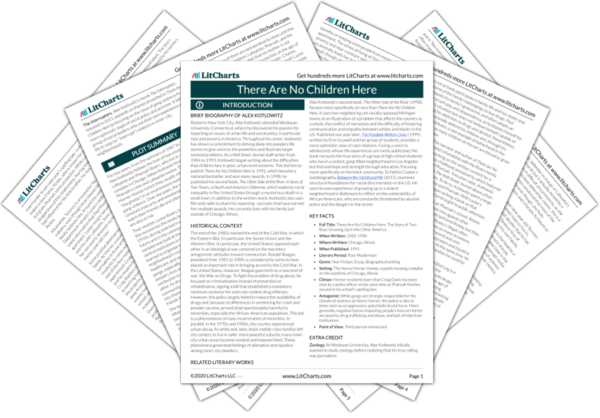Lafeyette and James’s fear of being recruited by gangs highlights their understanding that a person’s bad actions, such as killing someone, are not always the result of evil will. Instead, these actions can sometimes be the result of social pressure or coercion, such as the initiation to a gang. In this way, the two boys conceive of violence as behavior caused by one’s environment, not necessarily by one’s personality. As a consequence, they give up on fun and collective activities for the sake of safety.
